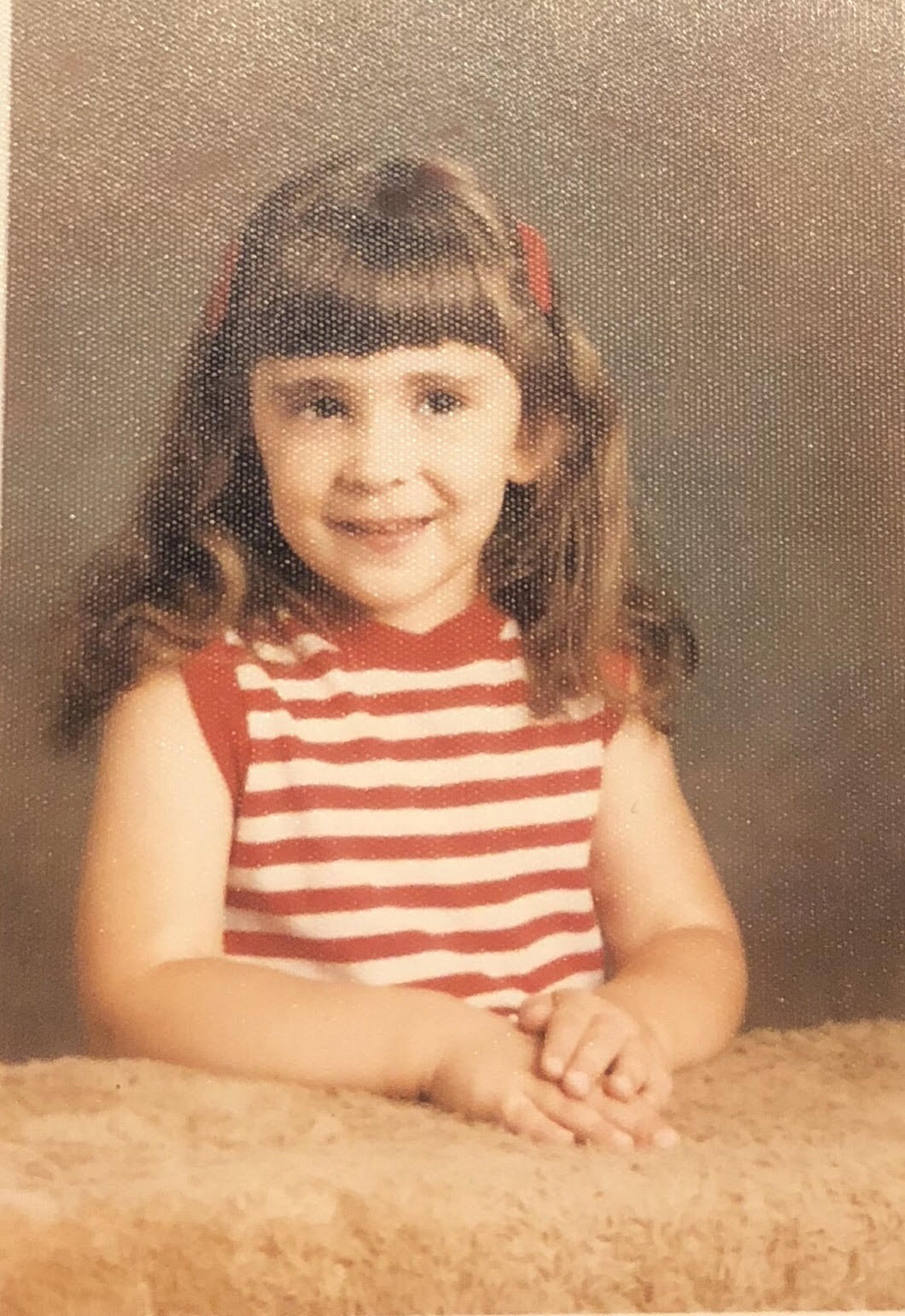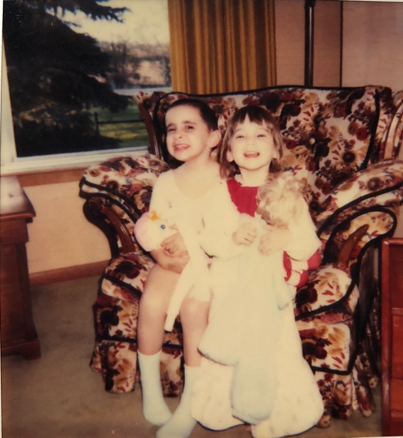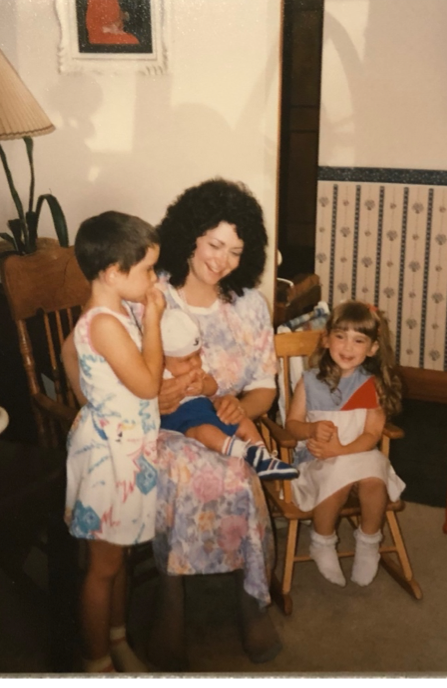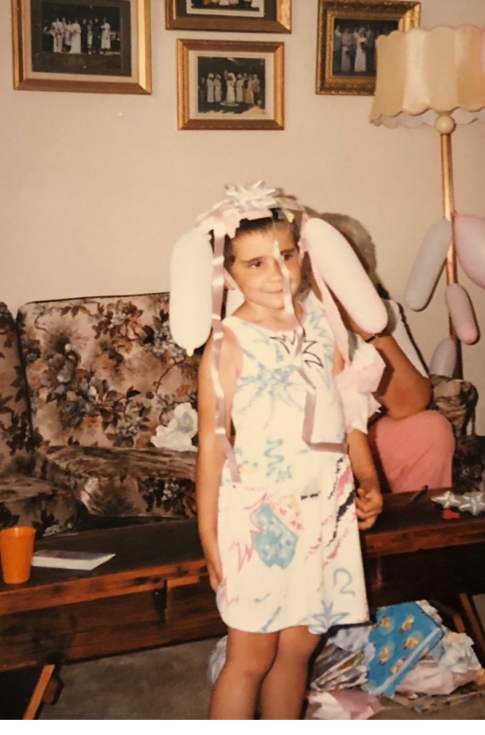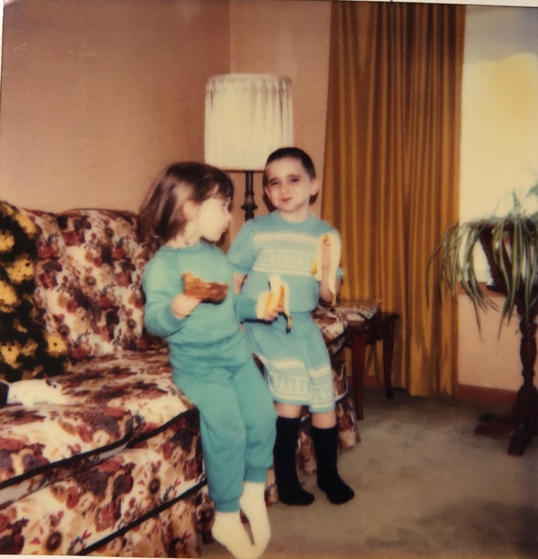On Fairy Tales
By Amanda Leduc
“We tell ourselves stories in order to live…[w]e look for the sermon in the suicide, for the social or moral lesson in the murder of five. We live entirely, especially if we are writers, by the imposition of a narrative line upon disparate images, by the “ideas” with which we have learned to freeze the shifting phantasmagoria which is our actual experience.” – Joan Didion, “The White Album”
Once upon a time, there was a girl who was born with a ball of water in her brain. It was invisible at first, disguised by her dark hair. When she grew old enough to walk and began to lurch around the house, her mother grew concerned and took her to the doctor.
“A cyst,” he said, after x-rays and scans. Like he was speaking a different language. “We’ll have to put a tube in to drain it out.”
The doctors put the tube in, but it didn’t work. Another scan revealed that the ball of water was gelatinous, like Jell-O, and so a surgery was scheduled. The little girl walked to the hospital with her parents on a cold day in February. She wore a puffy pink winter coat, and her long dark hair flapped in the winter breeze.
She came out of the hospital two months later. The cyst was gone, as was her hair. Her life was smaller now but also much larger, stretching in front of her like the darkest of red ribbons. She was still too young to understand this—she knew only that it hurt when people called her a boy.
The next year, when her right foot turned inward and she once more began to stumble, her parents took her to a different hospital in another city, far away.
This time, when she came out, she wore a cast on her right foot. She never walked the same way again.
This, she understood perfectly.
*
Growing up, The Little Mermaid was my favourite fairy tale. I was reared on the considerably brightened Disney version—my little mermaid was all red hair and purple seashells, dashing blue-eyed Prince and scheming, tentacled witch. My sister and I had the VHS tape on constant repeat; we spent long summer days wanting to be mermaids, throwing random objects into the deep end of our swimming pool and diving down to get them. When we slept, we dreamt of life under the ocean.
Your CanLit News
Subscribe to Open Book’s newsletter to get local book events, literary content, writing tips, and more in your inbox
What I didn’t realize then—what I wouldn’t realize until many years later—was that I had already been a mermaid. Diagnosed with cerebral palsy at age three and the recipient of three major surgeries by age six, I had spent a large chunk of my childhood floundering around. Hadn’t Ariel’s longing for feet been my own dream when I moved around in my wheelchair? When I transitioned to crutches and then worked with a physical therapist to minimize my limp, hadn’t I also dreamed of the jumping and dancing that Ariel sings about, down in her sea cave with Flounder and Sebastian?
There are no pictures from my time in a wheelchair—no pictures, my mother tells me, because I didn’t want any.
“You were embarrassed,” she says. “Once, when we were out, a little girl pointed at you and said Mummy, why is that little boy wearing a dress? I stopped taking pictures of you after that—you didn’t want the attention.” More than thirty years later, she still tears up when she tells me the story. “You didn’t want to go out after that. You were afraid to be out in the world.”
*
At school, the other kids call her a boy. They ask her why she walks so funny—they whisper Amanda has a pickle up her ass behind her back. Her hair grows in unevenly; they make fun of that too. Gimpy and lame-ass and cripple and weirdo. They laugh at her glasses. They laugh at the big, boxy shoes she has to wear.
One of the other girls at school makes of the girl her own cruel project. She is vicious in the way that children often are; sharp and devastating, perfectly careless. She registers the girl only to note how she is different—how she doesn’t walk the way that others do, how she can’t play sports like the other girls, how she is so often clumsy—dropping pens or books or spilling water over the table at lunch.
How she can’t be loved like other girls, because she isn’t normal. They don’t always say this, but the implication is clear. For five years, every day at school holds these kinds of surprises.
When they graduate, and go to a much larger school, the red-haired girl ceases to be a significant part of her life. Still—years after this, when they are much older, the girl sees a family photo of her red-haired nemesis on Facebook. Smiling husband, two cute kids. The other girl has, in the interim, given up her boxy shoes. She has traded her glasses for contacts and gone to school and travelled far away and written stories and made friends and had lovers. But the limp hasn’t gone away, and neither has the memory of those five years long ago. Staring at the photo of this red-haired spectre from her past, she feels trapped in precisely the way she’s tried so hard not to be.
I’ve been good, she thinks. I look like everybody else now. I move like everybody else. Where is my happy ending? Where is mine?
*
I was much older the first time I read the Hans Christian Anderson version of the fairy tale. In the original version, the mermaid has her tongue cut out by the sea witch as payment for becoming a human. She must convince the prince to marry her in order to stay human forever. But she never gains a chance to tell the prince that she was the one who rescued him, and instead must watch him marry another woman—a woman that he thinks is the one that actually did the rescuing.
These years later, I find myself focused on this image: the little mermaid, mute and heartbroken, watching her dreams all unspool. She has been mutilated in a number of ways: her tail and tongue taken from her, her ability to connect with others stolen from her as a result of the witch’s machinations. She has no hope of convincing the prince in this story, bedazzled as he is by the beauty and charm of his new bride. His new bride can talk, can she not? Throughout the latter part of the story the mermaid is continuously referred to as someone dear to the prince, his “little dumb foundling”, like a child or sweet sibling—she is infantilized and asexual to him, only a mild supporting character in the ongoing unfolding of his life. She is made, by virtue of her disability, less than what he might desire.
In despair, the little mermaid turns to her sisters, who have conspired with the sea witch to bring her one last chance at life. They hand her a knife and instruct her to murder the prince as he sleeps; only then will she receive her mermaid’s tail again and be welcomed back into the sea.
The mermaid, of course, cannot do it. Instead she throws the knife into the sea and jumps to her death from a cliff—a detail that Disney, naturally, cut from its telling.
*
When you tell the story of your own life, what do you want it to include? For the longest time, my story included dancing. I wanted my life to be a fairy tale, and my fairy tale included legs in the same way that Ariel’s did. In the story that I told myself, my own bright Disney fable, the childhood operations and the pain of schoolyard bullying were things that I could leave behind. They had happened before. They were not connected to the person I became.
Disney’s Little Mermaid, of course, had gained her legs by magic. I had gained my legs by the decidedly less romantic practicalities of orthopedic surgery, practicalities which left me with a limp that wouldn’t go away. And as much as I wanted to believe it, the happy physical ending that I thought I had acquired through virtue of surgery and therapy was not, in the end, the kind of happy ending that was talked about in the stories that I saw on screen. In actuality, my own life grappled with sadness in a way more reminiscent of the Hans Christian Andersen fable.
Fairy tales have historically been concerned with morals—and historically, morals have concerned themselves in a very particular way with the disabled. In The Little Mermaid, we have two versions of the tale: one in which the disability is vanished and the able body reigns supreme, and another in which the disability is permanent and leads to grief and suffering. Where is the space for disability as a simple fact of life in a scenario like this? If Ariel couldn’t hope to get her prince when she didn’t have legs and/or a voice, what hope could a disabled girl like myself have unless she was free from a wheelchair and walked in a “normal” way just like everyone else?
Stories have a deep effect on children—and continue, whether we acknowledge it or not, to have a deep effect on the adults these children become. A disabled child who grows up on fairy tales and stories that either do not feature disabled protagonists or connect disability—as in the case of The Little Mermaid—to a variety of impediments and failures becomes an adult who, however unconsciously, becomes used to seeing disability shrouded and hidden away from the realities of life. You think it doesn’t matter but it does—when you grow up on tales of a Beast who is made beautiful by virtue of good deeds and an ugly dwarf Rumpelstiltskin who makes a princess recoil in horror, or a friendly Quasimodo who never gets the girl, these things shape how you see the world. Those who are beautiful and good get things and become people in ways that those who are ugly or misshapen do not. If every story that you’re fed as a child has a happy ending, and those happy endings involve love and beauty, what are you supposed to make of a life that doesn’t have these things?
My own disability has been a fact of my life since I was three years old. I spent a great deal of time trying to ignore it, to pretend it wasn’t there. When Ariel walked, she walked gracefully, and everything turned out all right for her in the end. Where were the stories or the fairy tales about little boys and girls in wheelchairs, or girls who limped when they tried to dance in ballet? Where were the stories about children who were bullied as a result of these differences, and overcame them not through eradicating these differences but instead through understanding how important these differences were in the first place? They didn’t exist. Disabled people didn’t exist, except as minor plot points in tales like A Christmas Carol. Happy endings were only for the able-bodied. And so, since I most definitely wanted a happy ending in my own life, I set about pretending to be exactly that.
But my own fairy tale, the one that began with that first step into the hospital, has always gone a separate way. I came out of that hospital into a different life, and though I move through the world now in a mostly able-bodied way, I can’t help but wonder how my life might have gone had I seen those little girls on crutches and in wheelchairs early on, at the beginning of my story. How might my own view of myself as a disabled woman have grown in an environment like this? If I had read stories that encouraged the celebration of disability as just another element of life, how might my teen years have gone?
I might have been more vocal. I’d certainly have been more apt to include disability in the stories I was beginning to tell—more apt to see these differences as cause for celebration, yes, but also more apt to see these differences as normal, as merely one part of the world where I belonged.
Whether we acknowledge it or not, the stories that we tell ourselves as children shape the world that we encounter. Fairy tales and fables are never only stories: they are the scaffolding by which we understand crucial things. Fairness, hierarchy, patterns of behavior—who deserves a happy ending and who doesn’t. What it means to deserve something in the first place, what happy endings mean in both the imagination and the world. As a writer, I have only begun to understand how this shaped my sense of fairness and equality—as a disabled woman, I have only now realized the power inherent in claiming that happy ending for oneself even if the stories tell you otherwise.
When we tell stories, we look for happy endings as a way of reckoning with the unfairness of the world—with its injustice, with its cruelty, with its staggering ability to wear us down minute by minute. And yet a happy ending is made of a million things. Perhaps, for some, it is made of romantic love. Perhaps for others—for myself—it is made of the kind of love that comes from that wellspring of the self, from the acknowledgment that what I’ve encountered—as a child, as an adult—is not something to overcome on my way to happiness\, but in fact the very fabric of my life’s joy in the first place. I do not walk through the world like anyone else—but I’m proud of that now, and eager to see how the stories that I tell can help others to uncover this same joy.
Once upon a time, a dark-haired little girl walked into a hospital and began a journey that came to define the way she saw and experienced the world. It was not the happy story that she wanted as a child. Even now, as an adult, there are parts of the story that can hurt. I am often tired; I have trouble keeping my balance; I am constantly in pain. I worry every day about slipping in the shower or falling down a flight of stairs or slipping on a sidewalk slick with ice. I might not be able to have children. I live in a body that eats more energy than normal and is aging inexorably before its time—and there are still times when I catch my gait in the mirror and feel a whisper of those voices that spoke so cruelly when I was a child.
But this is the fairy tale that I get to tell. This is my complicated happy ending—my complicated, happy life. To pretend that any of this is something to overcome—as the world so often does for the disabled—is to do myself and my colleagues a disservice. Disability is something that I live with, not something that I’ve vanquished like a villain in a fable. The stories that I tell now try to show this. The stories that we all tell, now, should try to make space for this truth in some way.
Stories are the scaffolding by which we build our lives. When I tell stories now, when I use them to interrogate the world, I think of that girl from thirty years ago who was given this dark little gift. Hers was a story that went sideways from what she’d imagined, but in so doing it became a story that could reach for a different, more difficult kind of happiness. When you read fairy tales now, think of this. I do not want a story that ends with an arc into the sea, but neither do I want a story where difficulties vanish and everything is perfect. I want a story where a prince—where anyone, really—might find a way to communicate with a woman who has no voice. Where we understand and reach out for each other. These, to my mind, are the fairy tales worth telling.
The views expressed by Open Book columnists are those held by the authors and do not necessarily reflect the views of Open Book.
Amanda Leduc is a disabled author with cerebral palsy whose stories and essays have appeared in publications across Canada, the US, the UK, and Australia. Her first novel, THE MIRACLES OF ORDINARY MEN, was published in 2013 by Toronto's ECW Press, and her new novel, THE CENTAUR’S WIFE, is forthcoming with Random House Canada. She lives in Hamilton, Ontario, where she serves as the Communications and Development Coordinator for the Festival of Literary Diversity (FOLD), Canada’s first festival for diverse authors and stories.
